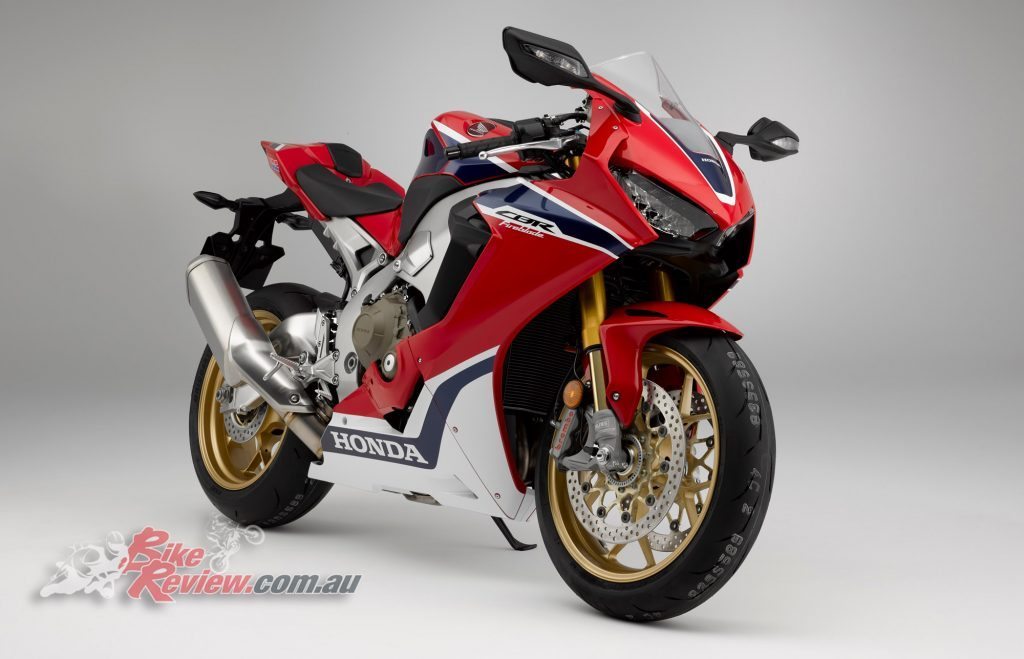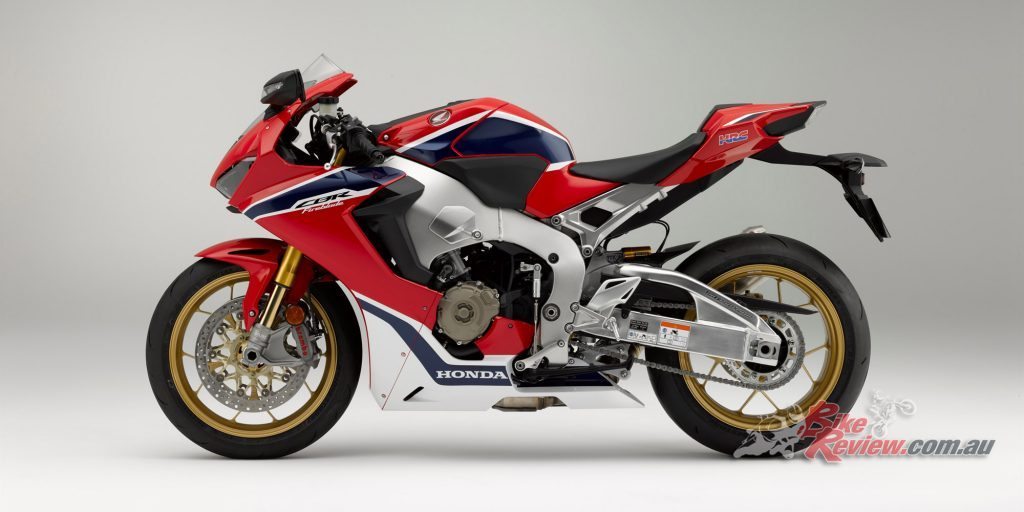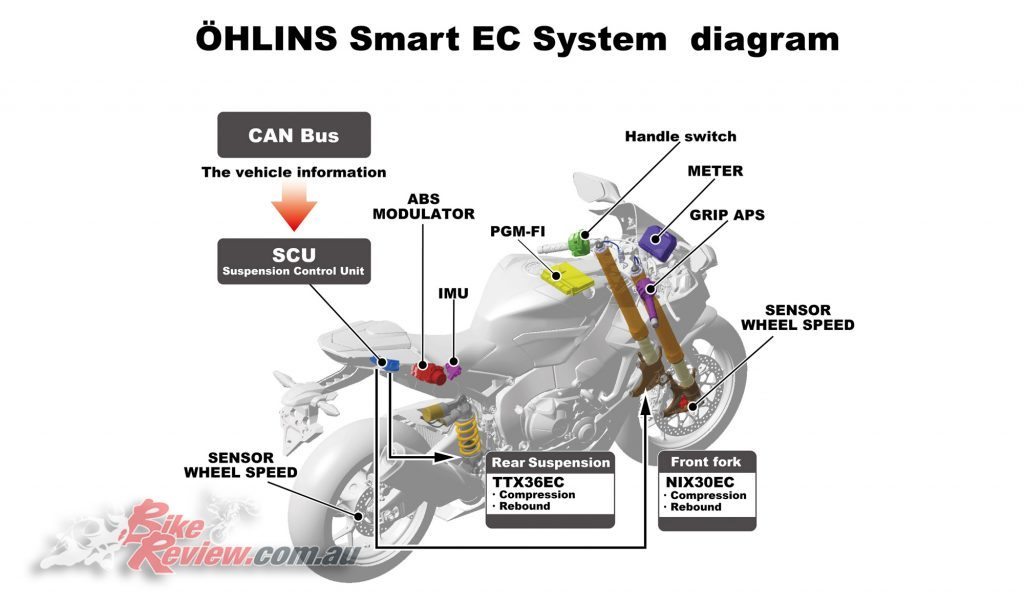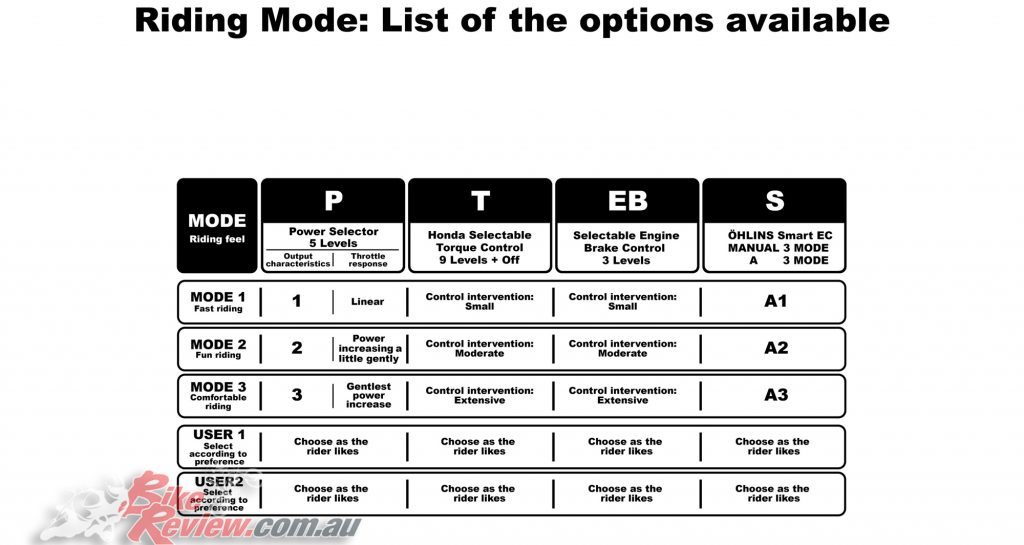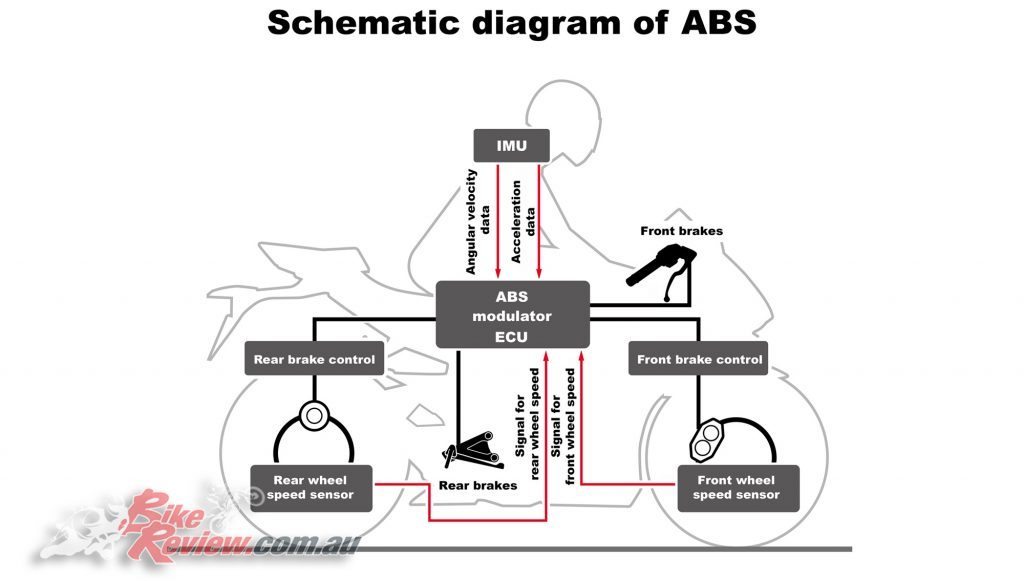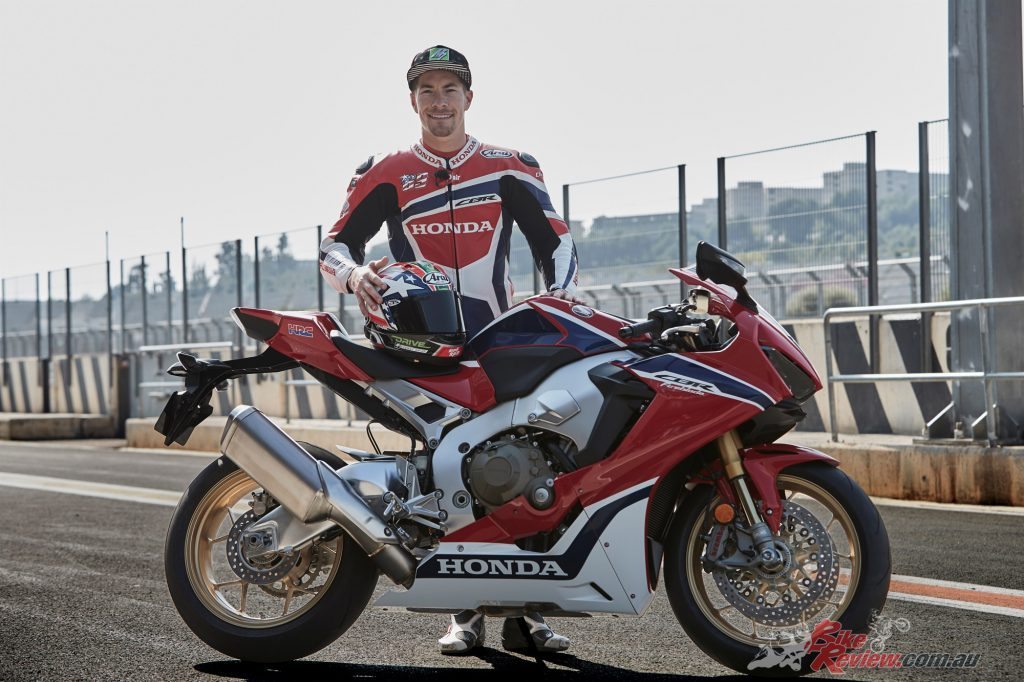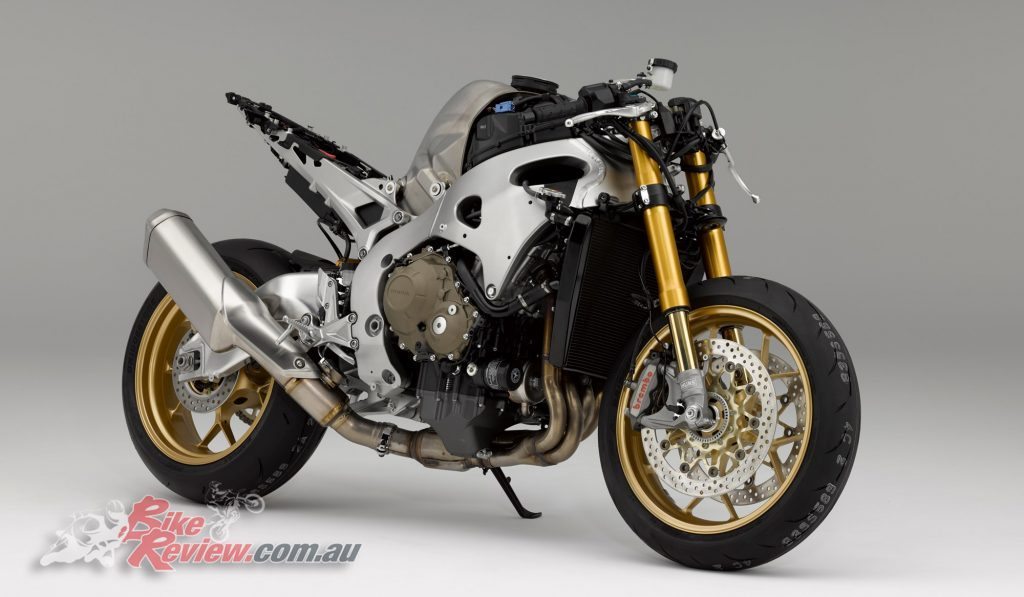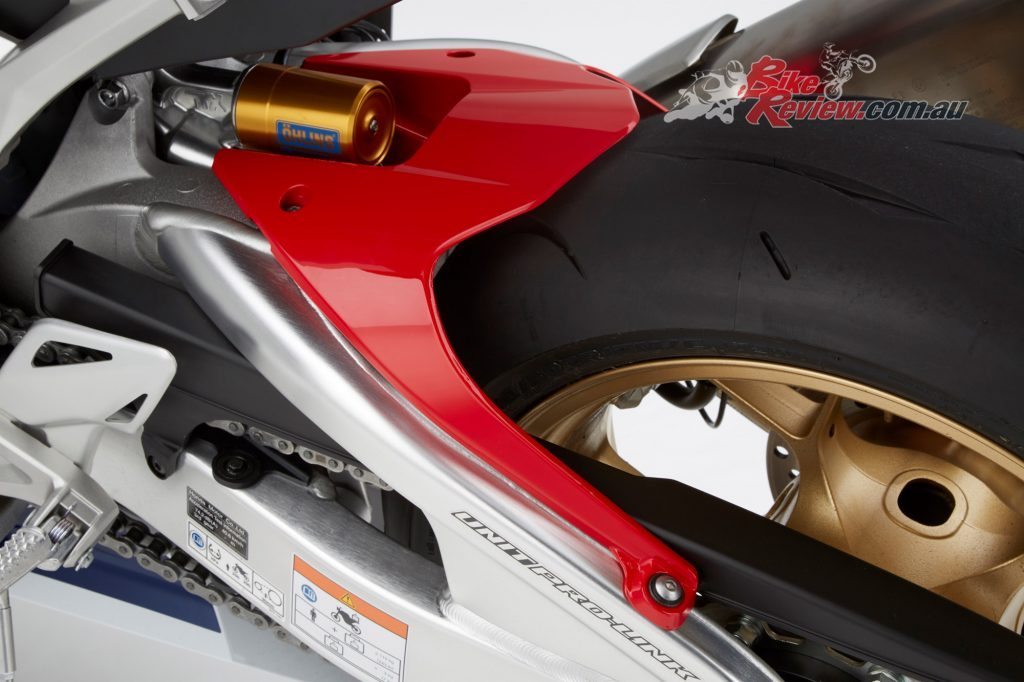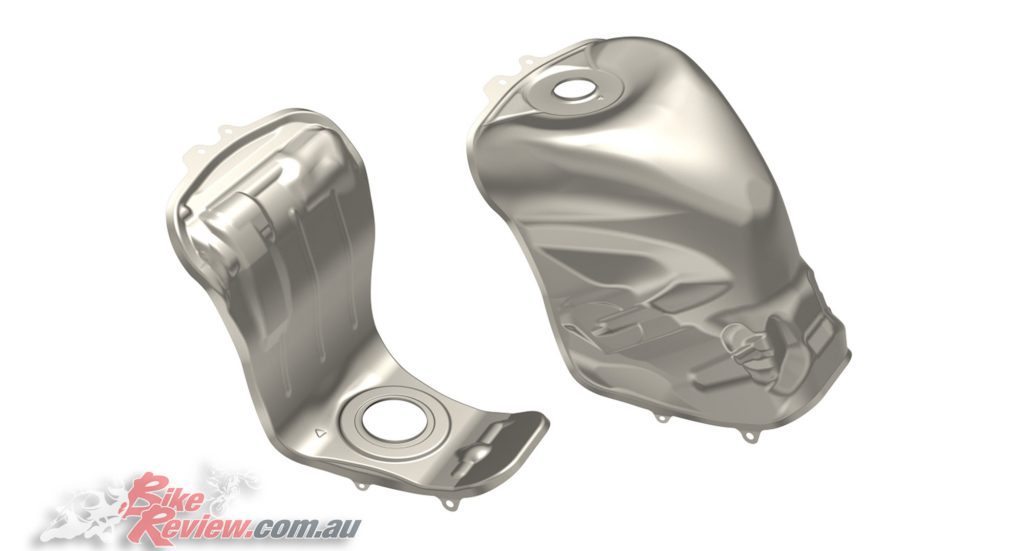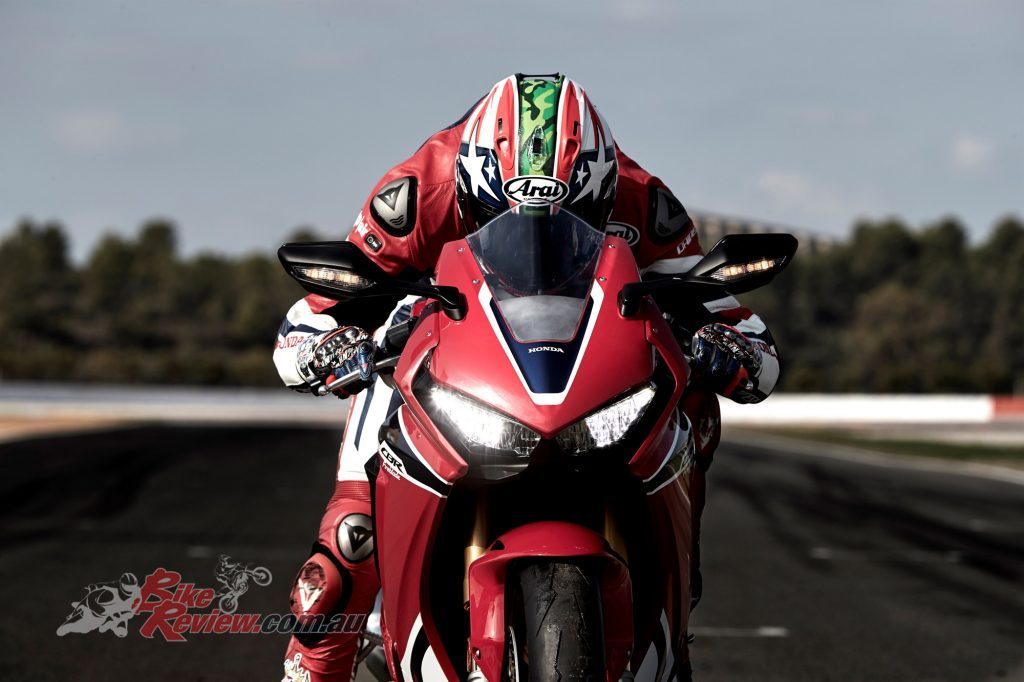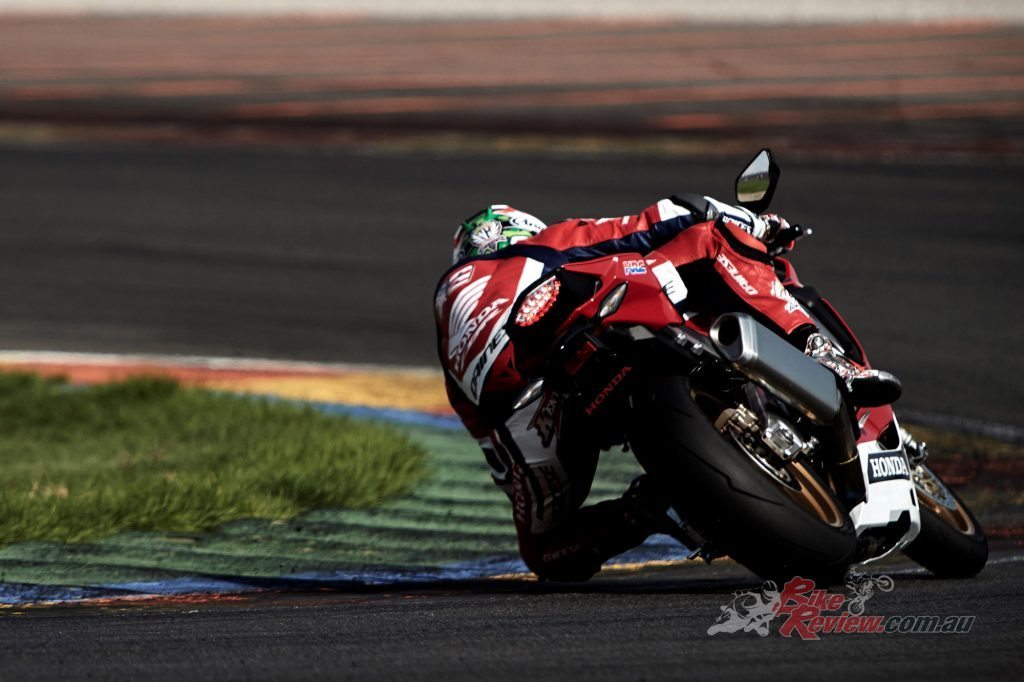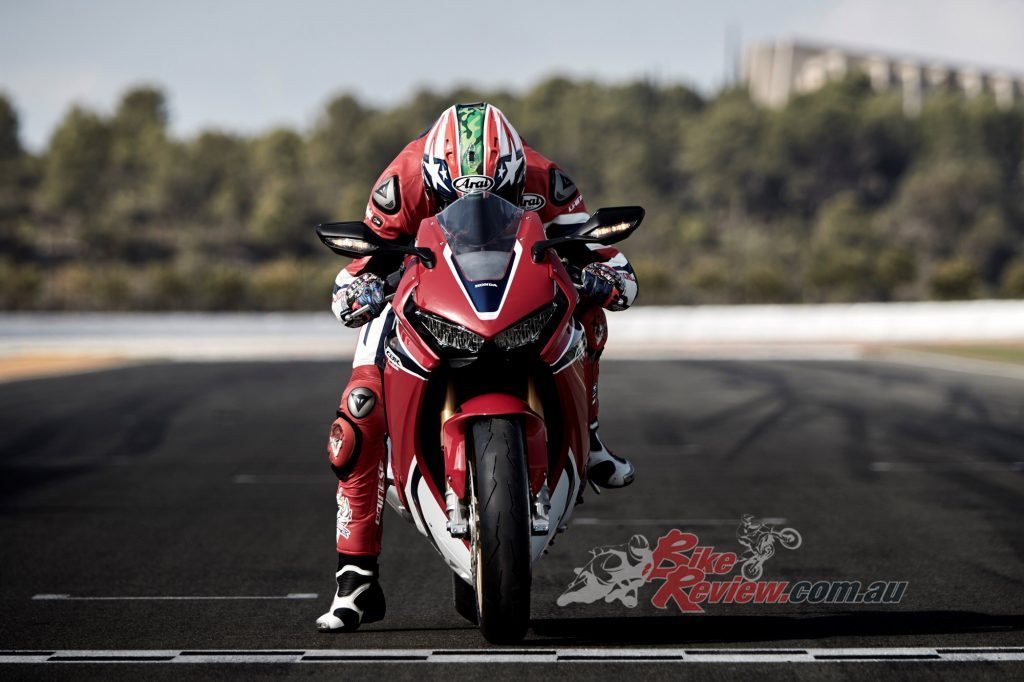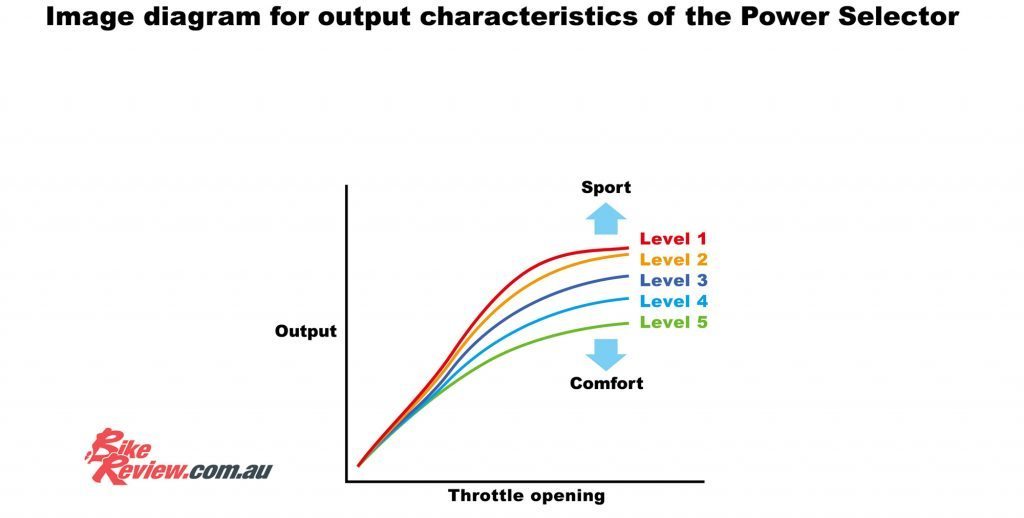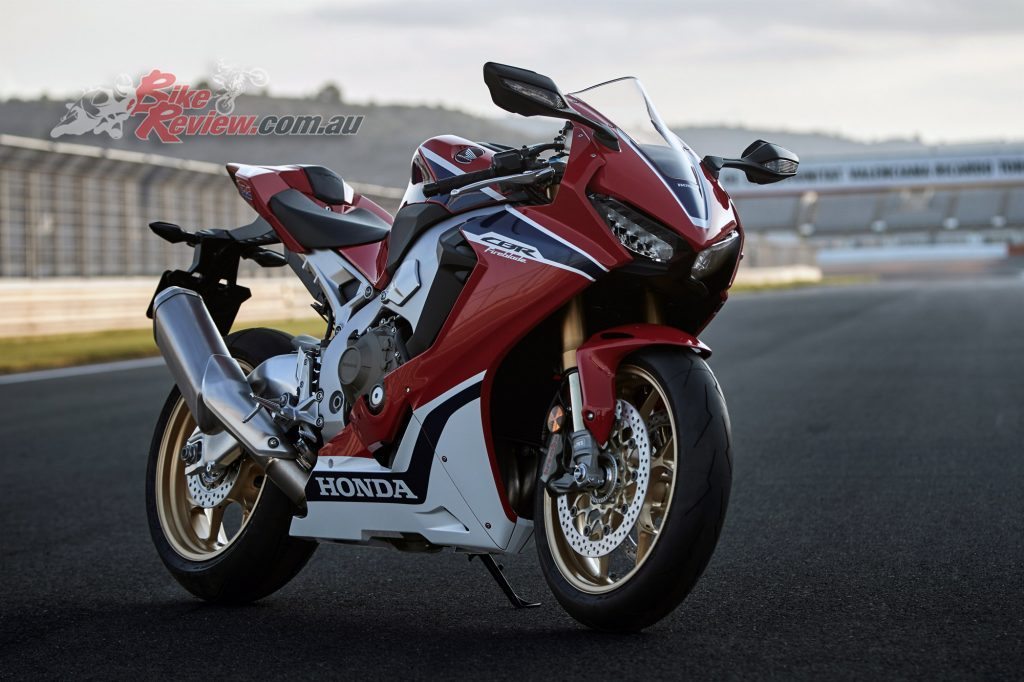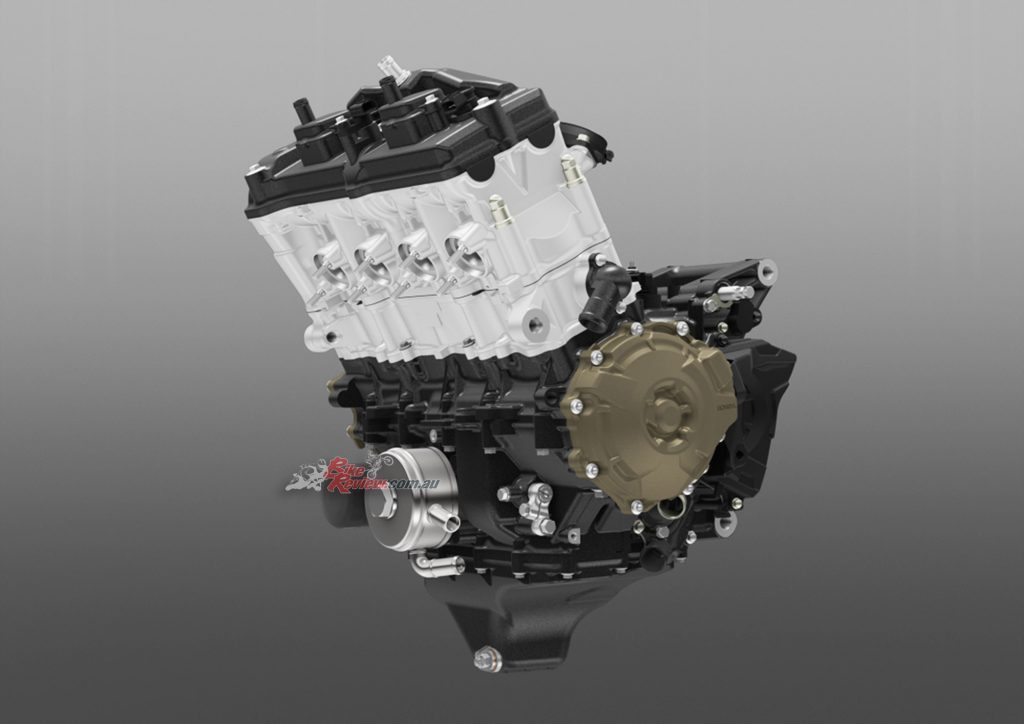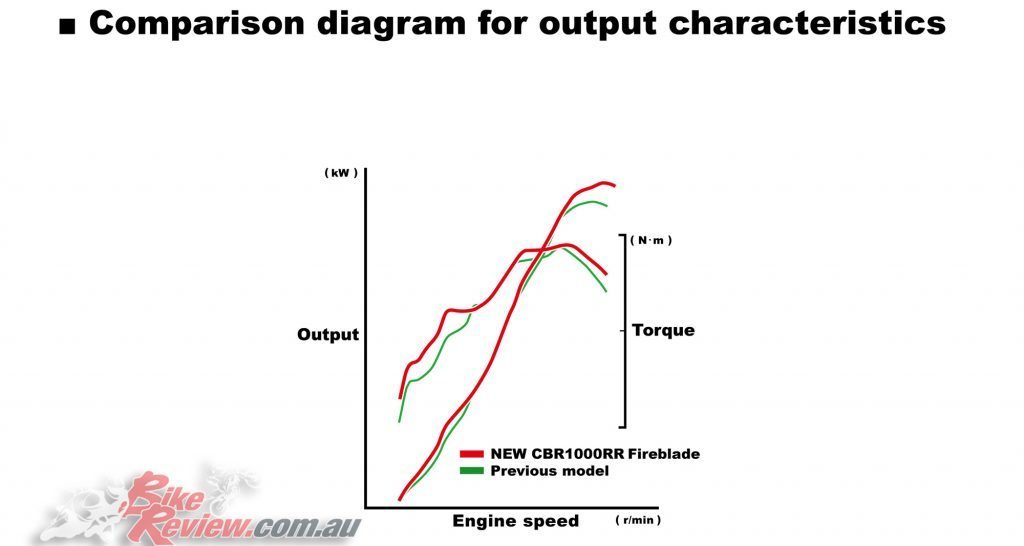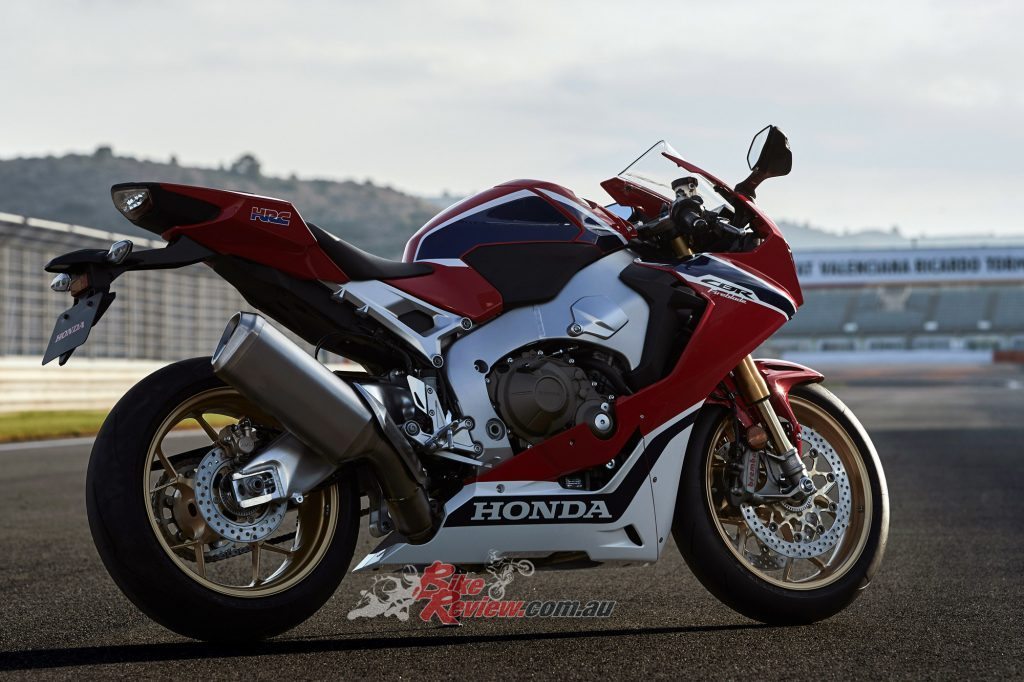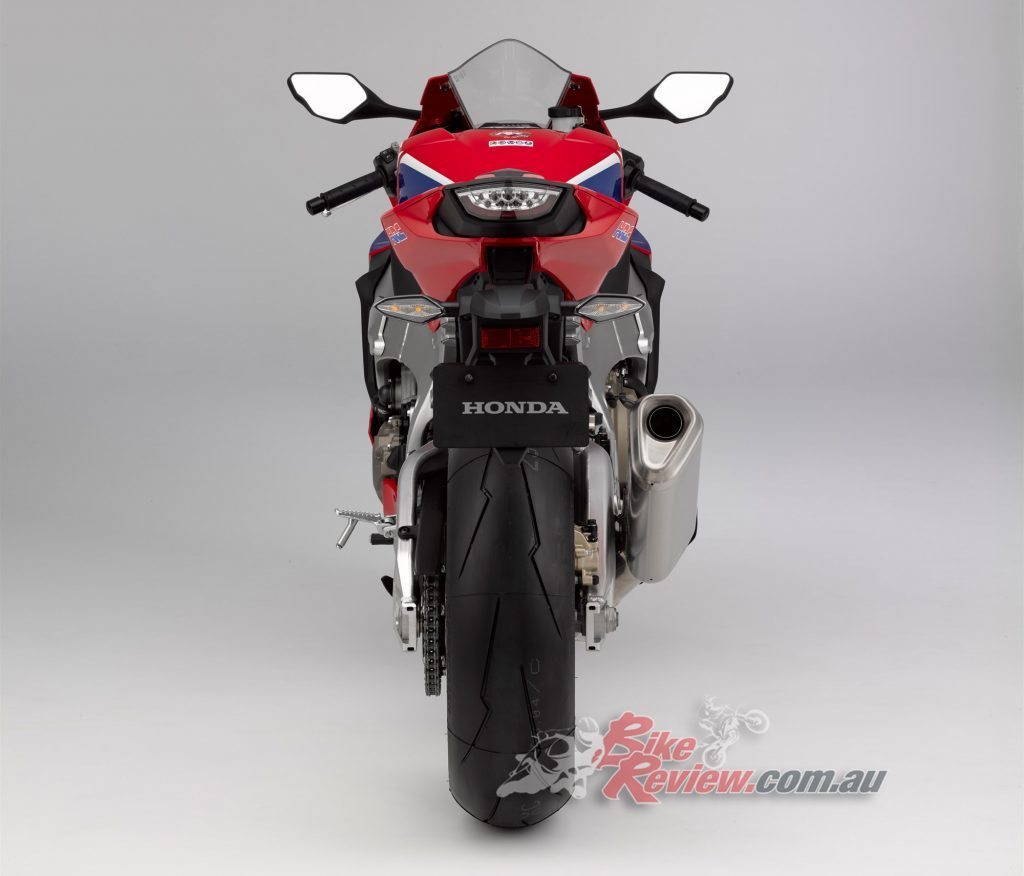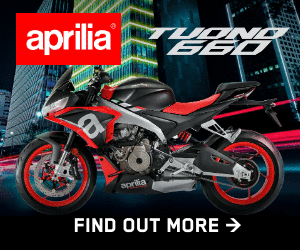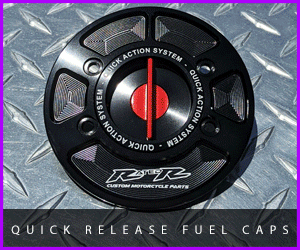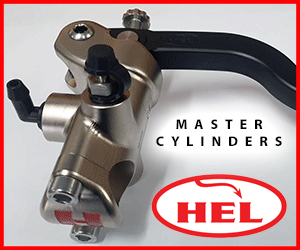2017 Honda CBR1000RRSP & SP2 Fireblades
It’s confirmed – the 2017 Fireblade is on its way. The 25th Anniversary edition of the famed Fireblade will be hitting Australian shores in the coming months; with two variants announced so far in the next generation line up: the CBR1000RRSP and CBR1000RRSP-2.
2017 Honda CBR1000RRSP Fireblade
Honda’s engineers have remained true to the first principles of the original project – power to weight – with the focus on cornering, acceleration and braking. Thus the 17YM Fireblade SP is significantly lighter than the outgoing model, makes more power and is fully loaded with a cutting edge electronics package that underpins the project’s development concept of Next Stage Total Control.
Three factors are key to the essence of the new Fireblade SP; less weight, more power and electronics to help the rider wherever and however they’re riding.
The new electronic control system provides constant, selectable and fine-tunable rider support. Central to the system is the 5-axis Inertial Measurement Unit (IMU), which measures exactly what the machine is doing, in every plane.
It works via the Honda Selectable Torque Control (HSTC) that precisely manages rear wheel traction via the FI-ECU and Throttle By Wire (TBW). The new ABS (also managed by the IMU) offers Rear Lift Control (RLC) and the ability for hard, safe trail braking into corners. Any difference measured between the front and rear wheel speeds engages Wheelie Control, depending on settings.
It also works with the Ohlins Objective Based Tuning Interface to adjust both the compression and rebound damping force of the semi-active Öhlins Electronic Control (S-EC) front fork and rear shock.
For the rider this means access to a whole new level of handling ability, with suspension reaction – whether working through pre-sets or manual input – that delivers exactly the right amount of control in every situation. It functions as well on the road as it does the track, and for Honda a new era begins.
At the same time as the S-EC is working the suspension, the Honda Selectable Torque Control (HSTC) is precisely managing rear wheel traction through the IMU, FI-ECU and Throttle By Wire (TBW). It also delivers a Wheelie Control function.
Three standard display modes – Street, Circuit and Mechanic – provide all the information required for the rider relevant to the type of riding. The information displayed can be fine-tuned and adjusted while riding by using the left hand switch gear and TFT liquid crystal display, just as on the RC213V-S, Honda’s road going version of its RC213V MotoGP machine.
While the electronic control is very much a new departure for the Fireblade, the combination of the other two factors draws faithfully on the philosophy of the original 1992 machine: the optimal balance of power and weight.
The engine revs harder and higher, with a much higher compression ratio and revised cam timing, and uses the TBW (a first for an inline four-cylinder Honda) and Acceleration Position Sensor (APS) which have been inspired by the technology developed for the RC213V-S
Bottom end torque and power are improved, with a significant increase in top-end power – up 8kW to 141kW @13,000rpm and 3 modes of engine output character can be chosen from. A Quickshifter is fitted as standard, as is Downshift Assist (with autoblipper) and new assist slipper clutch
Thanks to the use of magnesium and careful assessment and lightening of individual parts the engine also carries 2kg less. The new titanium exhaust muffler saves further weight and aids mass centralisation, as does the titanium petrol tank. Overall the Fireblade SP is 15kg lighter than the outgoing model, with a wet weight of 195kg.
The twin-spar aluminium frame’s rigidity balance has been finely adjusted, and the swingarm is stiffer to match. A new rear subframe is lighter as are the redesigned wheels, while Brembo monobloc four-piston front brake calipers use high-performance track-ready brake pads.
The Fireblade SP ’s bodywork outlines an aggressive, functional minimalism, and the machine is slimmer and much more compact with a single seat unit fitted as standard. All lighting is LED and the stunning Tri-Colour paintwork – on a red base – harks back to Honda racing history.
2017 Honda CBR1000RRSP Fireblade chassis/electronics features:
- Inertial Measurement Unit (IMU)
- Öhlins Electronic Control (S-EC) suspension
- Honda Selectable Torque Control (HSTC)
- New ABS
- Riding Mode Select System (RMSS)
The Fireblade SP is the first Honda motorcycle to be equipped with Öhlins S-EC suspension front and rear: a 43mm NIX30 fork and TTX36 shock.
The Suspension Control Unit (SCU) receives roll rate, yaw rate and lean angle information from a 40g 5-axis (3-axis acceleration and 2-axis angular velocity) Bosch MM5.10 IMU gyro located close to the machine’s centre of gravity.
It also gathers wheel speed, engine rpm, brake input and throttle angle from the FI-ECU and, depending on the suspension mode selected by the rider delivers optimal compression and damping force (adjusted via each step motor) during normal riding, plus hard acceleration, braking and cornering.
There are three Active modes and three Manual modes for the rider to choose from. When set in Active, damping force is controlled and optimised to suit the riding conditions: A1 (’Fast’), A2 (‘Enjoy’) and A3 (‘Safety’). Within the Active Modes the rider can make finer adjustments.
The Manual M1, M2 and M3 Modes allow any required adjustments to be made.
Within the electronic control system are a multitude of active features that many riders will find useful. The new ABS allows extremely hard braking while maintaining rear wheel contact with the ground, stopping the tendency for the rear of the machine to elevate or ‘back in’ around the front.
It uses the 2-axis acceleration information from the IMU and calculates the acceleration of the machine’s centre of gravity in the lift direction and acceleration perpendicular to that, using the front wheel as a grounding point.
ABS delivers smooth, effective braking into a corner. With information from the IMU, plus front and rear wheel speed sensors, the ABS Modulator controls braking force according to lean angle, even when panic braking.
But it also allows for hard trail braking by using two parameters (deceleration derived from wheel speed and front/rear slip rates) plus lean angle to vary the threshold for ABS decompression. ABS delivers an extra sense of security when braking hard on the road, and offers a performance edge in certain conditions on the racetrack.
In isolation all the functions of the EBC – plus the HSTC’s wheelie control – perform specific, individual tasks. When tied together, however and working seamlessly as one they provide technological rider support that elevates the super sports experience, without turning the rider into the passenger. Next Stage Total Control, indeed.
Like the RC213V-S, the Fireblade SP uses a full-colour TFT liquid crystal dash that clearly communicates information to the rider. It automatically adjust to ambient light, with a backlight of up to 1000 cd/m2 luminescence and features 3 modes; Street, Circuitand Mechanic, each displaying information most relevant for usage.
Street displays riding modes (1-3 and USER 1-2) plus the settings for each parameter P (Power), T (HSTC), EB (Selectable Engine Brake) and S (Suspension). Circuit adds in addition to Street mode the lap time, number of laps and difference from the best lap.Mechanic displays the digital tacho, gear position, grip angle, coolant temperature and battery voltage.
Riding mode 1 (FAST) gives full power, with linear throttle response, low HSTC and EB intervention and high damping force. Mode 2 (FUN) controls output through first to third gear, with fairly moderate power increase, medium HSTC, strong EB and medium damping force. Mode 3 (SAFE) controls output through first to fourth gear, with moderate power increase, high HSTC, strong EB and low damping force.
In the 2 USER modes all parameters can be combined and adjusted freely; riding modes, HSTC and suspension settings can be changed while riding from the up/down switch on the left switchgear.
The Shift-Up indicator is a horizontal line of 5 white LEDs located at the top; when engine speeds exceed user presets they go from solid to flashing. Displays include speedometer, tachometer, gear position, quickshifter, coolant temperature, riding distance and twin trip meters.
The onboard computer calculates instantaneous and average fuel economy, trip fuel consumption, average speed and time after last ignition plus remaining fuel after RES light and distance to empty (when selected). This information is shown on the bottom right of the screen.
In the upper display, middle right the rider can choose to see the Shift-Up indicator setting speed, grip angle, battery voltage, calendar, or user-defined text.
Switching between modes is controlled by a mode switch on the right of the left hand switchgear. Just above it is an up/down switch that manages and changes the information displayed within the mode.
2017 Honda CBR1000RRSP Fireblade chassis features:
- 195kg wet weight
- Adjusted rigidity balance for the frame
- Stiffer swingarm
- Lighter subframe
- Titanium fuel tank
- Brembo four-piston radial mount monobloc brake calipers
- Redesigned wheels
- Minimal and aggressively styled bodywork
As a machine now a full 15kg lighter – with a wet weight of 195kg – and with 8kW power boost, the Fireblade’s physical handling has also been transformed.
Rake and trail remain 23.3°/96mm but the hollow die-cast twin-spar aluminium frame’s rigidity balance has been significantly adjusted to give even sweeter handling with outstanding steering response, feel and stability.
Thinned frame walls save 300g. While transverse rigidity is unchanged, the frame is 10% more flexible in the torsional plane, which works to deliver a faster-reacting chassis. Yaw moment of inertia has been reduced by 15%; roll moment of inertia by 10%.
The Honda Electronic Steering Damper (HESD) unobtrusively maintains stability. To complement the frame changes the aluminium Unit Pro-Link swingarm’s hybrid structure has had the thickness of each section adjusted, saving approx. 100g while maintaining transverse rigidity and increasing torsional rigidity.
The die-cast aluminium subframe too has been redesigned and its thinner construction is at the same time highly rigid and 800g lighter – contributing to the concentration of mass and thus neutral handling feel with improved agility. Wheelbase is 1404mm; seat height is 820mm.
Positioned high the weight of the fuel tank (and fuel) plays a significant part in a motorcycle’s handling. In another first for mass production Honda has developed a compact 16L titanium fuel tank for the Fireblade SP. Manufactured by an ultra-deep drawing process, it’s 1.3kg lighter than an equivalent steel design and contributes to the concentration of mass and reduction in the moment of inertia.
Brembo four-piston monobloc radial mount brake calipers use newly developed high-mu (coefficient of friction) brake pads – these have a greater performance parameter at higher temperatures than standard pads, and suit aggressive ridng.
The aluminium wheels are a new five Y-shape design, saving approx. 100g. Tyre sizes are 120/70 R17 front and 190/50 R17 rear.
Minimal and dynamic are two words used to best describe the Fireblade SP ’s new styling. The design team wanted to create tightly compact proportions and the upper and middle fairing surfaces have been reduced in size as far as possible.
Forward tilting character lines inject an aggressive attitude, with a focus on mechanical functionality, detail and quality of finish.
24mm in width has been squeezed from the upper fairing. Airflow control from the flow surfaces of the fairing, to the surface angle of the headlights and the contouring of their side slits supports stability at speed.
In a racing crouch the rider is tucked well out of the airstream. In normal riding situations air pressure is evenly distributed on the rider’s shoulders, back and sides.
18mm has been saved across the middle fairing and its ‘knuckles’ double as RAD intake structures that pass discharged air around the outside, and underneath, the rider’s legs. The knee grip area is 15mm per side slimmer, with the interface between tank cover and the single seat unit athletically accentuated.
All lighting is crisp LED, with the twin front headlights offering high/low beam on both sides. Crowned with a sharply angled new logo, the Fireblade SP will be available in a Tricolour paint option that uses red as its base (rather than white) and pays homage to Honda’s racing tradition and history. Wing-motif patterns underpin the machine’s exclusivity.
A 1kg Lithium-Ion battery saves weight (a lead-acid unit of similar output would weigh 2kg) and provides reliable and consistent electrical charge.
2017 Honda CBR1000RRSP Fireblade engine/electronic features:
- Throttle By Wire (TBW)
- Acceleration Position Sensor (APS)
- Power Selector
- Inertial Measurement Unit (IMU)
- 9 level Honda Selectable Torque Control (HSTC)
- Wheelie Control
- Selectable Engine Brake (SEB)
- Quickshifter
- Downshift Assist
- Riding Mode Select System (RMSS)
The 17YM Fireblade is the first inline four-cylinder engine from Honda to use Throttle by Wire (TBW) control. Derived and developed from the system used by the RC213V-S, its job is to put precise throttle control – and a very natural feel – in the rider’s right hand.
Heart of the system is a newly developed throttle grip Acceleration Position Sensor (APS) integrated into the right handlebar switchgear, which itself neatly mounts the engine start/stop switch – nothing more.
APS converts movement of the grip into an electrical signal sent to the ECU, that then transmits it as an actuator signal to the TBW motor, achieving ideal throttle control relative to grip angle.
The return spring and other mechanisms inside the APS reproduce the initial play and natural feel of a cable, with throttle load set specifically for the Fireblade SP. Working in conjunction with the APS throttle bore is increased 2mm to 48mm (without increasing exterior width) and careful shaping of the intake funnels adds to the linear throttle response.
The Power Selector can be accessed through the Riding Mode Select System (RMSS). It offers 5 levels of output character: Level 1 give peak output in all six gears; Level 2 output is controlled in each gear to achieve smooth throttle feel under acceleration or deceleration; Level 5 has the strongest output control for most moderate throttle response. All levels have the same throttle response on initial opening.
Riding Mode (1) uses Level 1 as its preset, drawing out the full performance of the engine. Mode (2) uses Level 2, and is suitable for twisty roads, while Mode (3) goes to Level 5 for maximum security. Individual rider preferences can also be input manually through the USER 1 and 2 interface.
The Fireblade employs an enhanced version of the Honda Selectable Torque Control (HSTC) used on the RC213V-S. It controls engine torque via two sensing methods – the first uses wheel speed sensors to measure and compare front and rear wheel speeds.
When the FI-ECU detects rear wheel acceleration (and front wheel deceleration) it reduces the TBW throttle position, and thus output, keeping the front wheel on the ground. Maximum application of the throttle is thus possible without fear of wheelies, with the support of Wheelie Control.
The second sensing function detects machine roll angle. The IMU located under the seat detects rotational speed in the chassis’ roll and yaw directions, and acceleration in the longitudinal, lateral and vertical directions. It then calculates roll angle to control engine torque, maintaining rear wheel traction at the required level.
The body roll calculation logic used by the ECU uses the same attitude detection technologies developed for Honda’s ASIMO humanoid robot, enabling the most precise calculation possible.
Nine intervention levels (plus off) are offered by HSTC to suit rider preferences, and the Riding Modes USER 1 and 2 enable individual changes to be made while moving.
There is also a Selectable Engine Brake (SEB) system to change engine-braking character to match rider preference and a range of conditions. Level 1 offers the highest braking force, Level 3 the lowest. The preset Modes 1, 2 and 3 use recommended settings, but through USER 1 and 2 can be set individually.
A Quickshifter is fitted as standard for clutchless upshifts and works through fuel injection cut and ignition retard. It has 3 settings plus off. Downshift Assist allows clutchless downshifts, and also works via fuel injection cut and ignition retard with TBW autoblipping. It too has 3 settings plus off.
2017 Honda CBR1000RRSP Fireblade engine features:
- 8kW power increase
- Revised valve lift and cam timing
- Magnesium covers and detail redesign saves 2kg
- 4-2-1 exhaust with titanium muffler
- Redesigned downshift assist
- New assist slipper clutch
Honda’s engineers exhaustively re-examined the Fireblade’s 999.8cc inline four-cylinder engine to make it as light and powerful as possible. The result of the work is an extra 8kW, the loss of 2kg and raised rev ceiling of 13,000rpm.
Peak power is 141kW @ 13,000rpm, with peak torque of 116Nm delivered @ 11,000 10,500rpm. Bore and stroke remain 76 x 55.1mm but compression ratio is up from 12.3:1 to 13:1. This is an engine in a very high state of tune and the crankshaft, valve train and transmission all use higher specification materials than the previous design.
The pistons feature an optimised wall thickness and a new crown design to raise the compression; the surface finishing of the piston-ring grooves has also been modified to improve sealing performance and efficiency. Valve lift and cam timing has been revised to match the higher rpm and greater engine performance.
Power up is just one part of the Fireblade SP ’s story – reduced weight is another. So every part of the engine was scrutinised to see if it could be made lighter. All the engine covers are redesigned (clutch cover is aluminium; the ignition cover magnesium) and the length of the bolts, water hose and water hose bands have been reduced.
With a revised, rounded shape the radiator is 30mm narrower in overall width and 100g lighter (including a 30cc reduction in water capacity). Using a new high-density core it achieves identical heat dissipation and contributes to the slimmer frontal area of the fairing cowls.
The assist slipper clutch is completely revised with a single die-cast pressure plate and clutch centre, and offers reduced load at the lever. For downshifts the slipper functionality remains the same as before but aluminium cam parts (instead of steel) save weight.
The gap between the accelerating and decelerating cams has also been optimised, again improving lever feel when changing gear. All of the transmission gears have been pared down to save weight.
The titanium irregular cross-section muffler is 2.8kg lighter and minimises the centre of gravity change; it also creates an unmistakable sound tone from the exhaust on an open throttle.
The exhaust supplier to the Repsol Honda MotoGP team was asked to develop the prototype and produced an exquisite design with the 4-2-1 double-skinned downpipes incorporating the exhaust valve within the first main pipe.
2017 Honda CBR1000RR Fireblade SP Specifications:
ENGINE: Liquid-cooled 4-stroke 16-valve DOHC Inline-4, 999cc, four-valves per cylinder, 76 x 55mm bore x stroke, Compression Ratio: 13:01
Max. Power Output: 141kW/13,000rpm
Max. Torque: 116Nm/11,000rpm
Oil Capacity: 3.4L, Fuel system: PGM-DSFI, Fuel Tank Capacity: 16L, Electrical system: Electric starter, Battery Capacity: 12V-4.5AH(Li-ion)
Clutch Type: Wet, multiplate clutch, Transmission Type: 6-speed, Final Drive: Chain
FRAME: Diamond; aluminium composite twin spar
Dimensions (L x W x H): 2065mm x 715mm x 1125mm, Wheelbase: 1404mm, Caster Angle: 23.3°, Trail: 96mm, Seat Height: 820mm, Ground Clearance: 129mm, Kerb Weight: 195kg
SUSPENSION: Telescopic inverted fork with an inner tube diameter of 43mm, and a NIX30 Smart-EC (Öhlins) Front Fork with preload, compression and rebound adjustments, 120mm stroke, Unit
REAR: Pro-Link with gas-charged TTX36 Smart-EC (Öhlins) damper featuring preload and compression and rebound damping adjustment, 60mm stroke
WHEELS: 17 inch, 120/70 ZR17 58W, 190/50 ZR17 73W
BRAKES: Dual Brembo monobloc four-piston calipers, ABS, 2 Channel
INSTRUMENTS & ELECTRICS: TFT-LCD, HISS, LED headlight/taillight
2017 Honda CBR1000RRSP2 Fireblade
The CBR1000RR Fireblade SP2 is instantly recognised by its exclusively built Marchesini wheels and commemorative 25th anniversary silver mark along the belly of the fairing.
Visually the carbon pattern insets and gold striping interwoven into the Tricolour paint mark the Fireblade SP2’s difference over the ‘stock’ machine and gold Marchesini wheels (reducing front/rear wheel inertia by 18/9 per cent f/r) are another clue.
But the real differences – and what gives the Fireblade SP2 ultimate racing potential – lie inside the engine and, in turn, the parts that can be added from the two race kits that will be available.
While the 76mm bore is identical to the SP, the Fireblade SP2 cylinder head runs 1mm larger 31.5mm diameter intake valves and 1.5mm larger 25.5mm diameter exhaust valves, with 10°/12° included valve intake/exhaust included valve angles (from 11°/11°). The valve pitches are identical, maintaining cylinder head width.
It runs the same 13.0:1 compression ratio but uses valve shapes and combustion chambers optimised for efficiency. Elongated spark plugs and a water jacket tightly wrapped around the combustion chambers improve cooling; this technology is derived directly from Honda’s RC213V MotoGP machine.
The pistons use an exclusive crown design with heat treatment that strengthens the area around the piston boss, which itself employs a 2.5mm shorter (and 8g lighter per cylinder) piston pin. Ready to house high-lift camshafts the outer diameter of the valve lifter has grown 2mm to 28mm, while total height and thickness have been reduced saving weight.
The Fireblade SP2’s electronic control devices are the same as those of the SP, with exclusive SP2 settings. For both race and general circuit use, a racing kit will be available.
A model for true enthusiast and primarily built for race modification; the CBR1000RRSP-2 has further weight reductions sought from a redesigned cylinder head, pistons and engine composition.
With knowledge gained during the development of the RC213V-S, the 2017 Fireblade CBR1000RRSP and SP-2 further solidify the legacy of the world’s best Supersport motorcycle.



